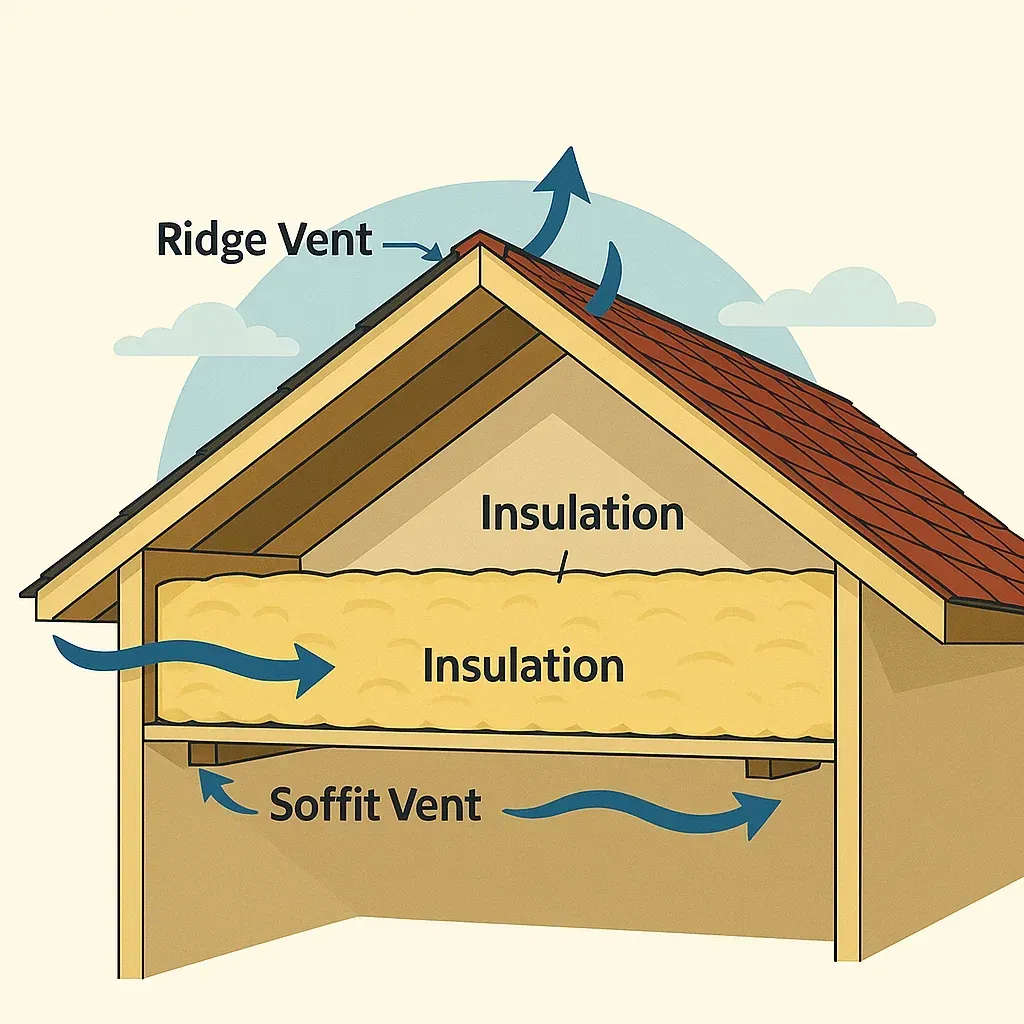
Roof Ventilation & Insulation for Attic Performance
Why Ventilation & Insulation Must Work Together
Key Components of an Insulated, Ventilated Roof
"Proper insulation and ventilation are two sides of the same roof.” –
Introduction:
An insulated attic that isn’t ventilated can trap moisture, degrade your insulation, and invite mold. Conversely, great ventilation can’t compensate for insufficient insulation when it comes to energy bills and comfort. In this guide, we’ll explain why matching the right insulation strategy with effective roof vents is crucial for a durable, energy-efficient home.
Why Ventilation & Insulation Must Work Together
Moisture Control: Insulation traps heat and moisture; vents remove that moisture before it damages wood or insulation.
Energy Efficiency: Insulation limits heat flow; proper ventilation prevents attic overheating and reduces HVAC load.
Roof Longevity: Balanced airflow and thermal protection reduce shingle stress and extend service life.
Indoor Comfort: Stable attic temps prevent ice dams in winter and limit heat transfer in summer.
Key Components of an Insulated, Ventilated Roof
Insulation Types
Blown-in Cellulose: Fills gaps around rafters but needs clear vent channels.
Spray Foam (Closed-Cell): Creates air seal—requires less ventilation but still benefits from soffit intake.
Batt Insulation: Must be cut around baffles to keep soffits open.
Rigid Foam Board: Installed above deck; pairs well with continuous ridge vents.
Ventilation Methods
Soffit & Fascia Vents: Intake vents at eaves bring fresh air into the rafter bays.
Baffle (Rafter) Vents: Plastic channels that keep insulation from blocking soffits.
Ridge Vents: Continuous exhaust vents along the peak for passive airflow.
Box/Static & Turbine Vents: Supplemental exhaust when ridge vents aren’t possible.
Batten Vents: Intake under tiles or metal panels, especially on specialty roofs.
Design & Installation Best Practices
Calculate Net Free Area: Follow a 1:300 or 1:150 ratio (intake vs. exhaust) per code.
Install Baffles First: Place rafter baffles before insulation to preserve the soffit-to-ridge pathway.
Seal Air Leaks: Use spray foam or caulk at recessed lights, chases, and gaps to stop warm air dumping into insulation.
Position Vents Strategically: Highest exhaust (ridge or turbine) and lowest intake (soffit/fascia) maximize stack effect.
Match Insulation to Ventilation Strategy:
Closed-cell foam: fewer vents needed but still benefit from intake.
Loose-fill/batt: must respect baffle spacing for airflow.
Maintenance & Performance Tips
Annual Inspection: Clear debris from soffits and roof vents; remove leaves or bird nests.
Moisture Monitoring: Look for condensation spots or mold along rafters.
Insulation Checks: Ensure batt insulation hasn’t sagged into baffles; top up blown-in insulation if settled.
Energy Audit: Use an infrared scan to spot hot or cold spots indicating poor ventilation or insulation gaps.
Conclusion:
Balancing roof ventilation and insulation is essential for moisture control, energy savings, and roof health. By choosing the right insulation type, installing effective intake and exhaust vents, and maintaining clear airflow channels, you’ll create an attic system that protects your home year-round.